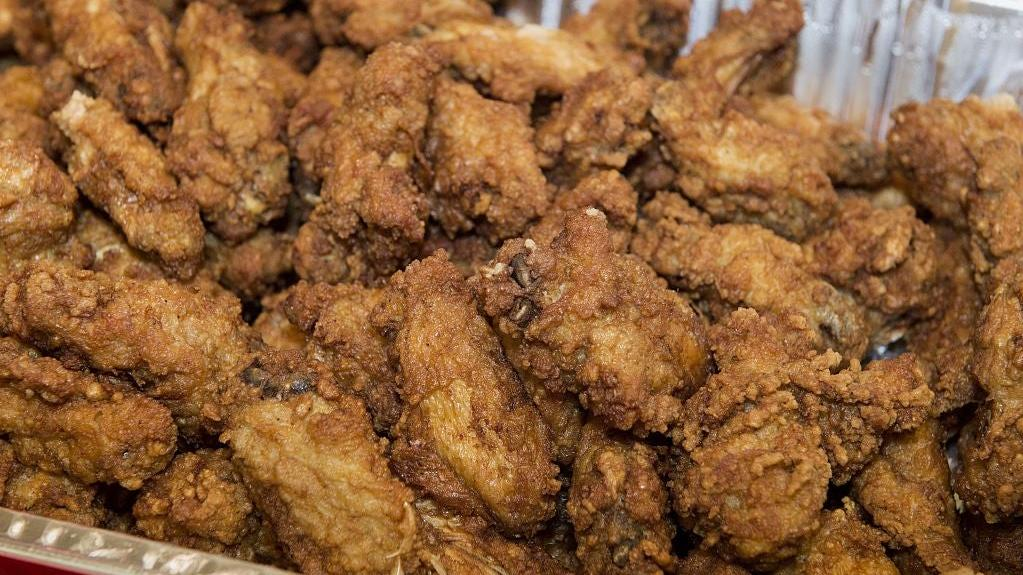All The Reasons The Food Supply Chain Is Strained Right Now
Have you recently achieved two-weeks-after-the-second-shot vaccine immunity? Are you now looking to ease back into the life you had before the pandemic, scheduling meetups with friends four nights a week just to get caught up with everyone after this brutal year? Well, you're not alone—that describes a huge chunk of the U.S. population. And the food industry is on a top-speed treadmill just trying to keep up.
The Wall Street Journal recently explained all the various factors that are putting strain on our food supply as America enters its pandemic recovery period:
Increase in demand
Seemingly everyone wants to celebrate Shot Girl Summer by toasting their friends at a local bar and grill, and they're headed to restaurants in droves. That's an abrupt change of pace from even four or six weeks ago, when restaurants were still in the throes of scaled-down operations with skeleton crews working on takeout-only meals. It's not like restaurants were given more of a heads up than the rest of us when the CDC changed its mask mandates two weeks ago, and now these businesses are scrambling to staff up, place bigger food orders, and generally return to pre-pandemic operations without alienating customers due to inconsistency, delays, or spikes in cost.
Rerouting food supplies
To minimize expenses during quarantine, restaurants shrank the size of their food orders from suppliers. (This was a big part of the reason for all those "streamlined" fast food menus we saw in 2020, by the way.) The suppliers, in turn, reduced their own output, and whatever they did produce got sent mainly to grocery stores instead of restaurants, since we were all staying at home cooking and baking all day. Now that people suddenly want to visit restaurants again, restaurants are placing larger orders that suppliers can't fulfill at the drop of a hat. They, like every other business affected by the pandemic, have to staff up, ramp up production, and reconfigure logistics to deal with the spike in demand. This will probably mean that both restaurants and grocery stores will experience shortages of certain items for the time being.
Rising cost of meat
Meat processing plants have been the epicenter of COVID outbreaks in many communities, and safety protocols have been put in place at many sites to reduce the spread. This leads to decreased output, and that drives up the cost of the product. WSJ cites one pizzeria in Indiana that saw the cost of pepperoni jump by 60% in just five weeks. And that's when restaurants can actually receive the meat they order—many are experiencing unpredictable and incomplete deliveries. (More information on chicken shortages can be found here.)
Transport is more expensive, too
"The disruptions and changes in delivery patterns are driving up transportation costs because the specialized refrigerated truck trailers needed to transport food are in such high demand or out of position," WSJ explains. The per-mile cost of refrigerated truck transport has increased by more than 20% since February.
You can’t ship food without packaging
The food supply chain isn't just about the food itself, but also the resources needed to ship it all over the country and the world. Corrugated cardboard, from which shipping boxes are made, has experienced its own supply chain issues due to the pandemic, and as we've previously discussed, packaging in general can be a major factor in food shortages.
"We can make salad dressing but we can't make the bottles to sell the salad dressing," Suzanne Rajczi, chief executive of distributor Ginsberg's Foods Inc., told WSJ.
Lack of workers
This might be the most complex issue of all, since there's a lack of workers everywhere: processing plants, distribution centers, trucking companies, restaurant servers, etc. That is not to say that workers don't exist to fill these positions, and it's certainly not the case that "no one wants to work anymore," as some businesses are claiming. Instead, many workers putting themselves at risk by showing up to their jobs did not feel adequately protected by their employers throughout the pandemic, and many even received more money from unemployment and stimulus payments than the paychecks at their difficult minimum-wage jobs offered—a sure sign that wages must be increased for hourly work across the board. Child care responsibilities during a remote-learning school year are also inhibiting many people (especially women) from returning to work.
So, if you can't find your favorite brand of breaded chicken patties in the freezer aisle, or don't understand why your pizza delivery is a few bucks more expensive this time around, some combination of all these factors might be to blame. Knowing just how much the industry has been turned on its head by COVID, it's nothing short of a miracle that we get to purchase and eat more or less what we want so much of the time.
